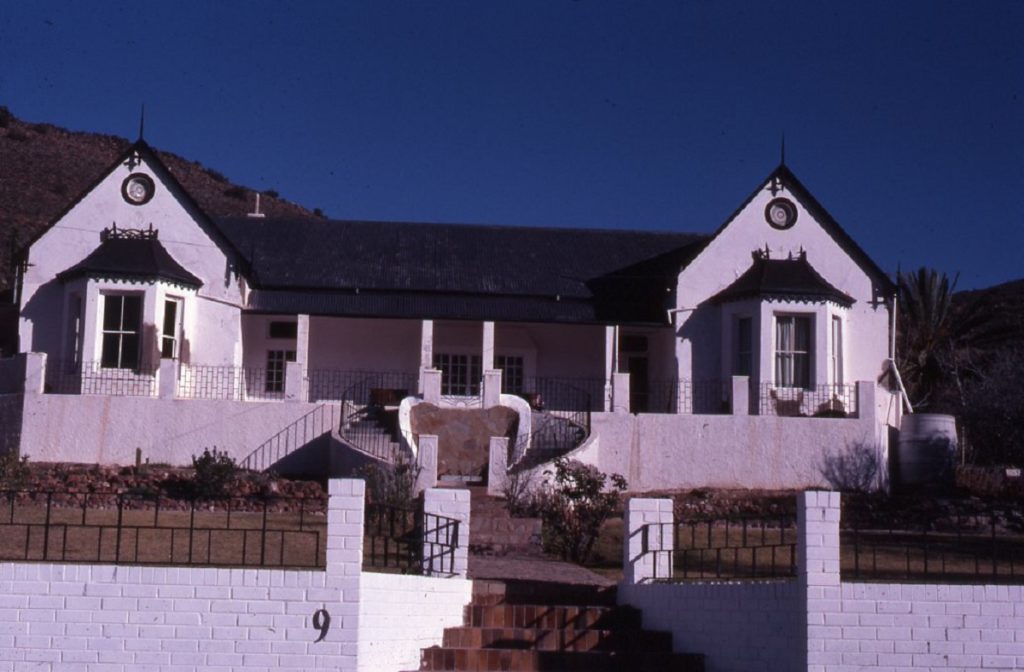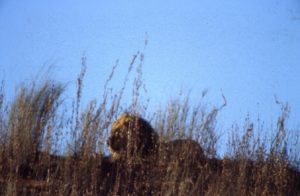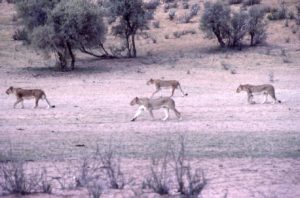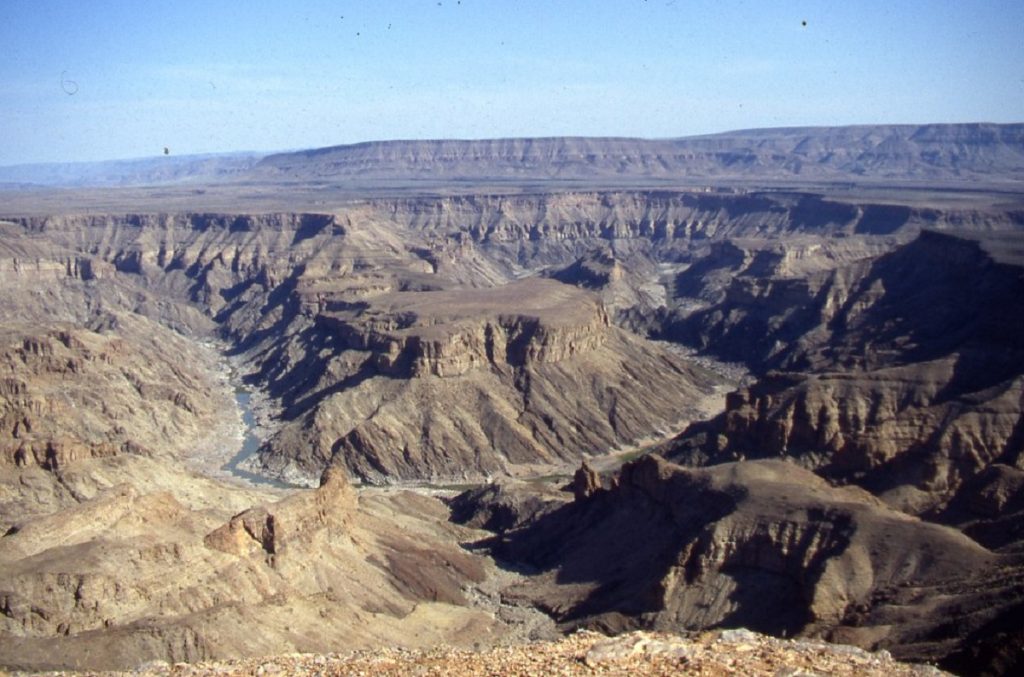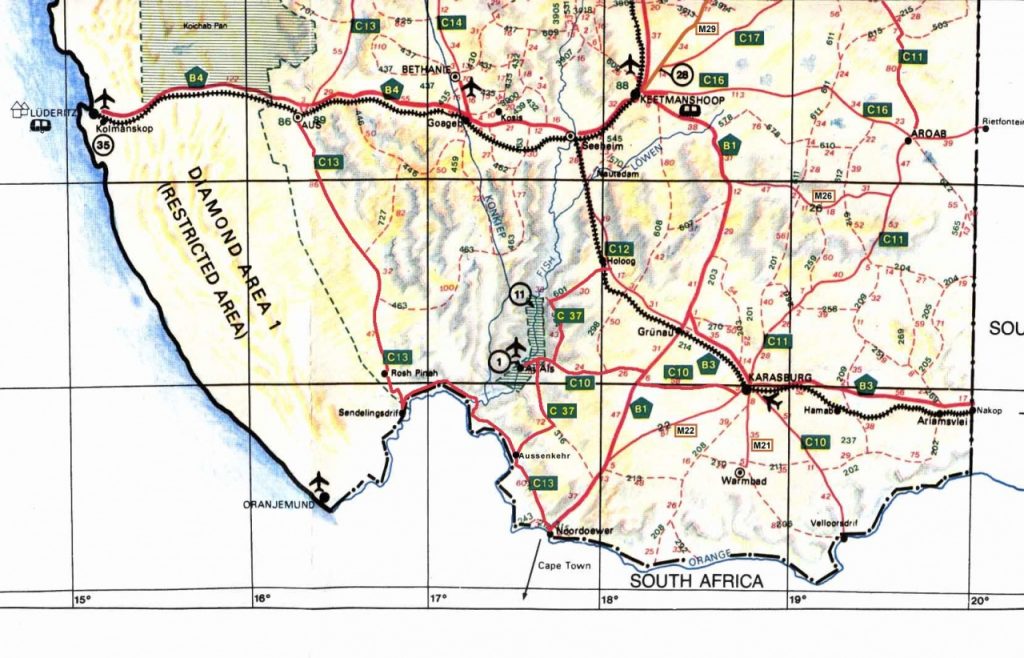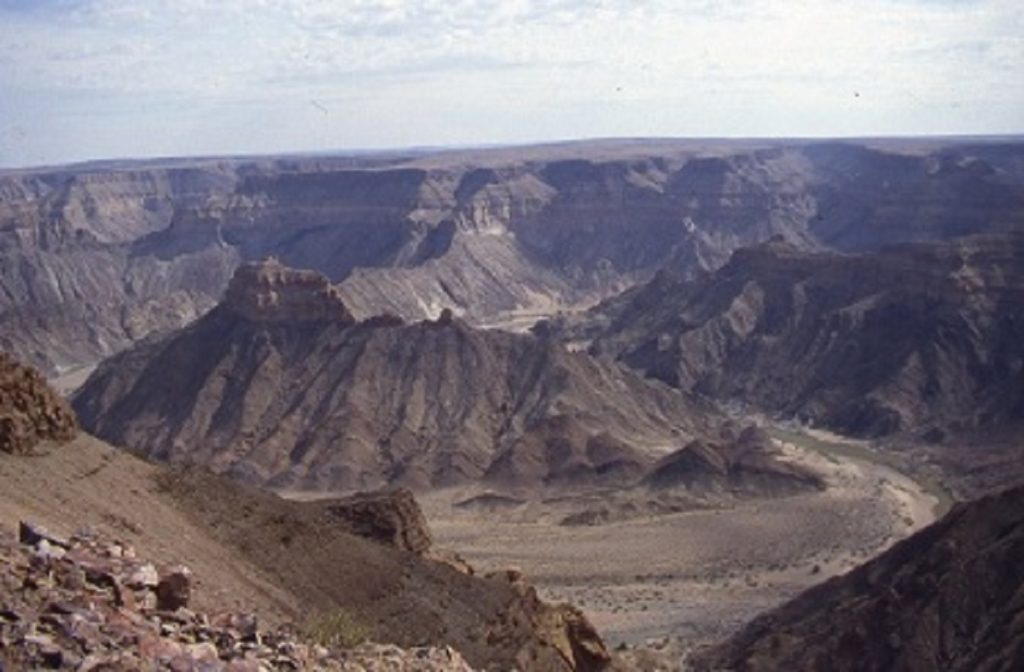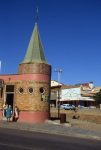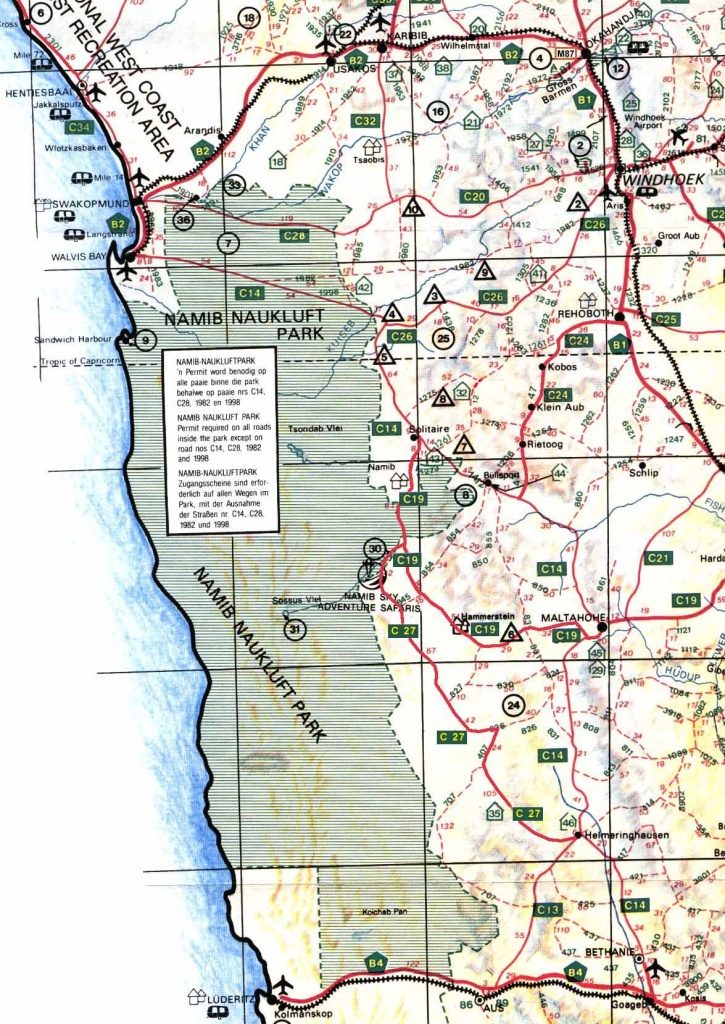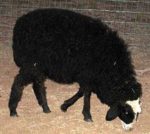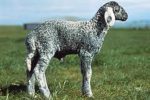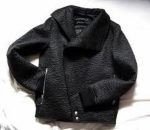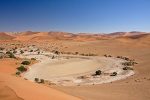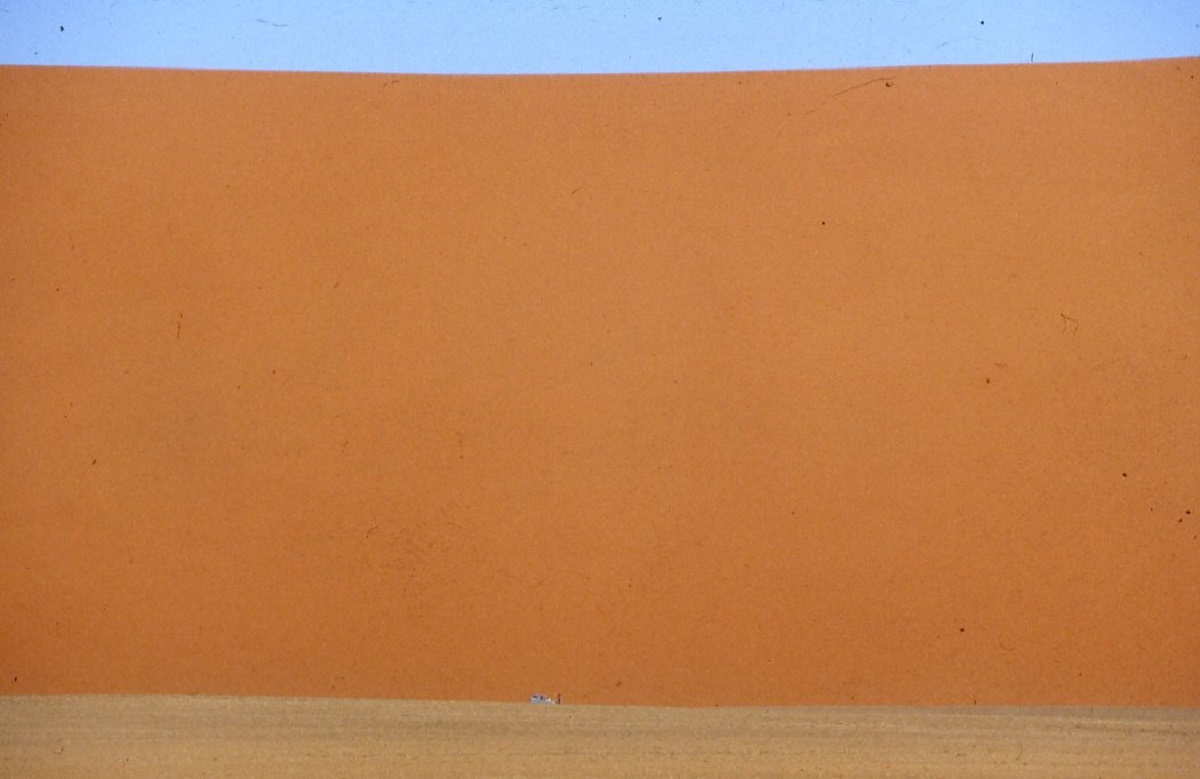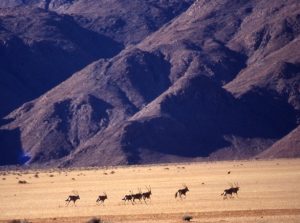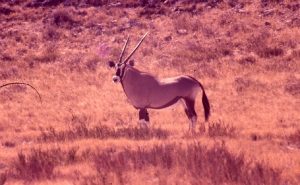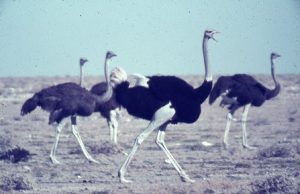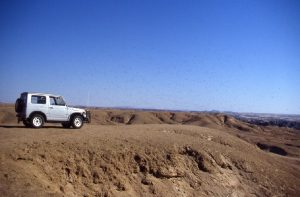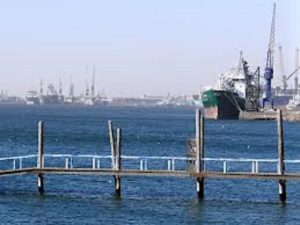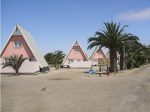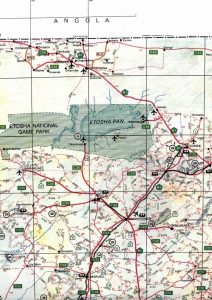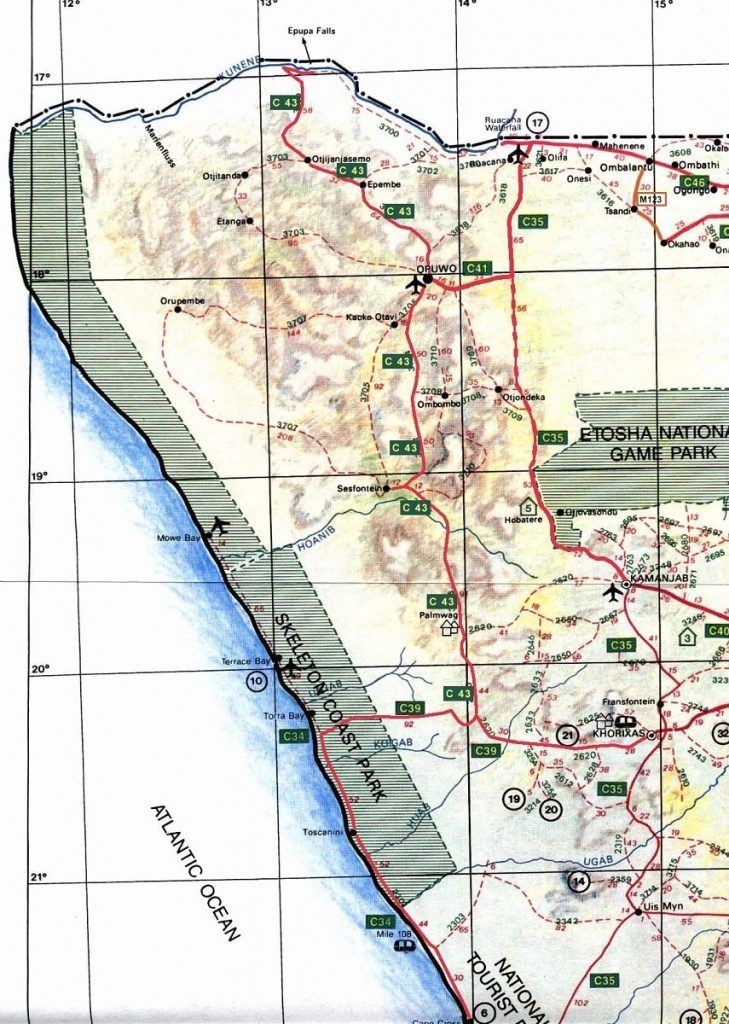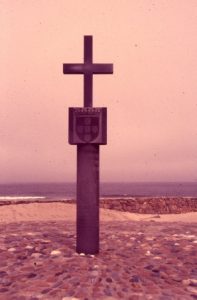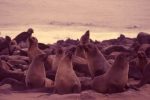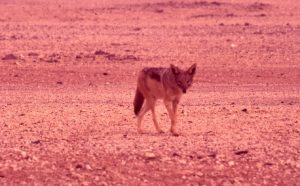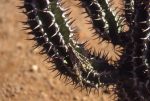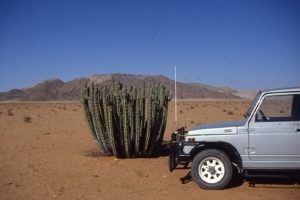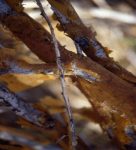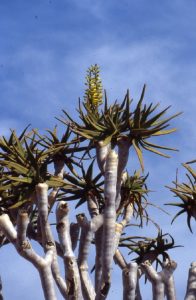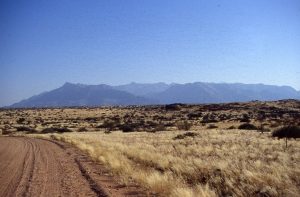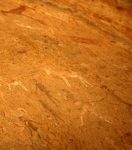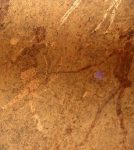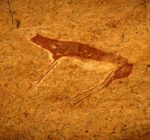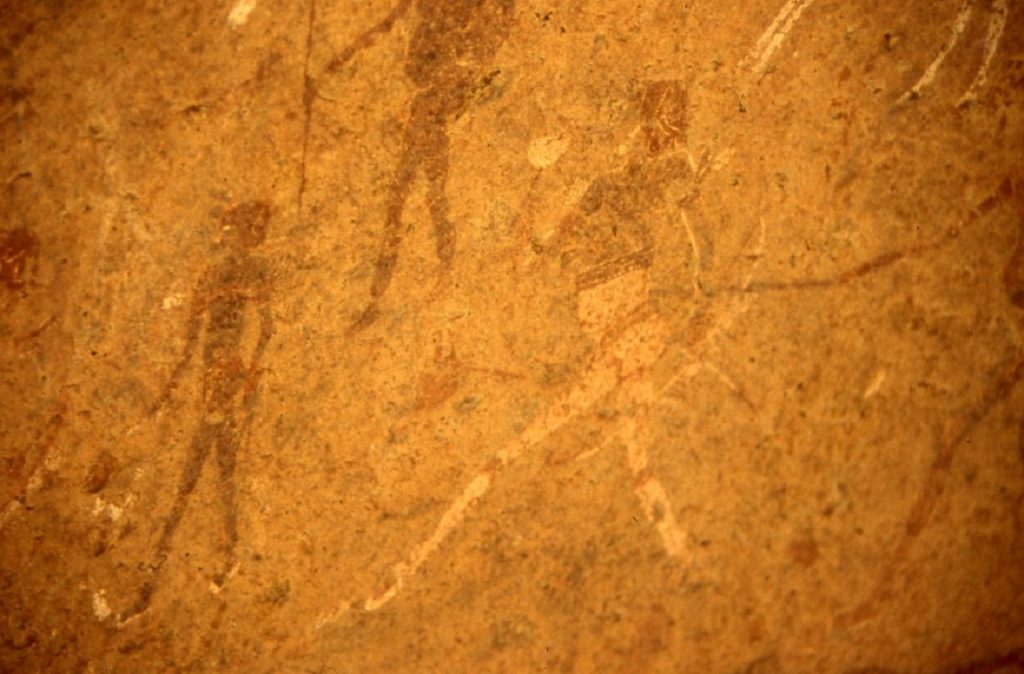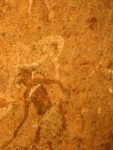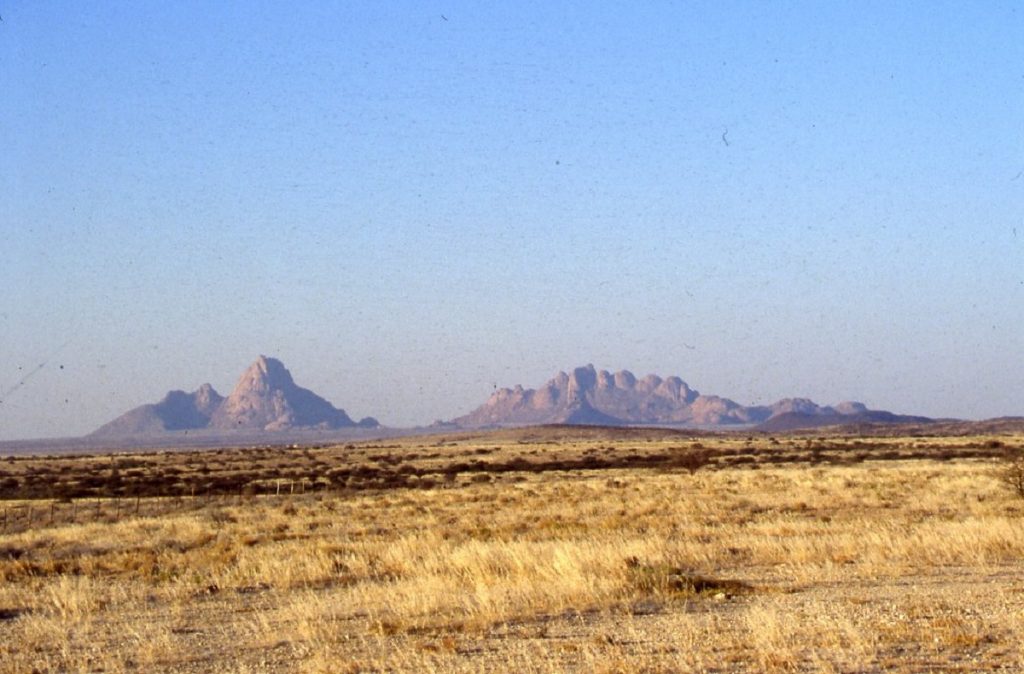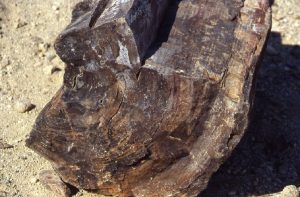Victoria West..Videos ..Kalahari National Park ..Kruger National Park ..Namibia ..Back to Australia
South Africa September 82-Oct 84
I caught up with Judith at Jan Smuts (now Oliver Tambo) Airport where she was worried sick about me. I was sort of sober when I arrived. Judith had made some friends on the journey to South Africa and they guided her along and helped her stow the luggage. We had something to eat and then an air hostess came by and asked us if we would like to take the Milk-Run to Cape Town via George. We did and arrived there two hours earlier. I rang my Mother from the airport to say that we were safe and trying to engage a Taxi to bring us to the Strand. Taxi drivers were not keen as bad people would throw rocks and chunks of cement from the overpasses which you needed to pass under to get to the Strand. Eventually we got one after paying R100 up front. The money had not yet devalued there so it was a fair wack to pay for a 24-kilometre ride.
When we got to Mother’s place, we had to borrow some money off her to pay the Taxi driver.
Mother wanted to know what happened in Harare and we told her some of the truth. For the next few days we kicked our heels up, went for long beach walks and nattered with mother about this and that.
I had inherited some money and my Aunt’s 1958 Jaguar Mark 4 from my Uncle Lex’s joint estate which was divvied up into 17ths. My brother, Bernie, had come from the USA and declared that seeing as I had used his investment to purchase land that instead of me paying him back, I should sign the Jaguar over to him. Sensing an advantage here I said “Where do I sign?”
I made enquiries about taking the money out of the country but that was against the rules at that time, however, if I worked the money in the country and then left it would be OK. I discussed it with my Mother and she was non commital.
I bumped into my old mate Phil Kaplan from Beaufort West in Sea Point, I can’t remember how, and he put me in touch with Danny, a distant cousin of his. Phil had returned from the States after a business hiccup, and was working Security at the Epping Markets.
Victoria West again
Videos
Video was just starting in South Africa and I bought a Beta Machine and a Video Camera and external battery and hard drive. We decided to go to Victoria West. We bought an old Edwardian House up on the hill and moved in. We bought some furniture for this huge house and set up living there.
As I was born in South Africa I could return any time even though I was travelling on an Australian Passport and Judith had a permanent residency visa.
With my contacts I started a Video business in the Main Street. We hired the old Barbershop rooms and set our business up.
We bought a cute little bright red Mini brand new from our friend, Sean Garstin, at Robbs Motors in Cape Town. It had a sunroof and was fun to drive but it leaked oil out of the engine from day one.
Out of nowhere the Booyse family came to work for us again. They must have heard that we were in town. Baba came to work in the kitchen cooking good food and her husband Tellardt became my right-hand-man. I organised for him and some day labourers to build the driveway and the retaining wall. Then one day at an auction I bought a string of semi-detached houses and with Tellardt, and some other workers, turned it into a long house. We sold it soon after and moved on to the next house project. I had about 10 workers. Mainly bricklayers and plasterers. Bricks were fired out in a quarry in the veldt and I used to go out there and haggle with the Brickmaster, who was a very enterprising African man by the name of Adam Haas.
Our friends, Kierie and Berna Botha let us have one of their pure-bred Maltese dogs and ‘Snowball’ was a treat. When we left they took her back and she lived till a ripe old age.
Friday nights in winter was hunting nights. Kierie used to shoot Springbuck for the International market. We would all assemble in the area where buck were to be shot. Only headshots on prime male Spring buck were accepted. Kierie was an ace shot and in demand. When we were invited for a full night out in the veldt, I would drive the shooter truck. Kierie sat on the back of the truck behind the cab in a swivel leather armchair with his rifle dead-resting on a sliding beam. His use telescope let in light from everywhere and the target was brought close up. Kierie had a 100% strike rate. Piet van der Westhuizen and I were in the front, either driving or navigating. We had all been school-pals together back in the 50’s and knew each other’s foibles. We had a lot of laughs together. Sadly, they both did not make old bones like me.
I bought an older model American Chevrolet utility and gave it to Tellardt, to use for our building jobs. Later on I gave him ownership of the vehicle.
Kalahari National Park
A week appeared where we had some free time and I had promised Judith than I would take her to the Kalahari-Gemsbok National Park. As per usual. it was an enlightenment. We drove to Upington where I hired a Toyota Hi Lux 4×4 for our trip into the wild country. Just as well as the corrugations were severe in places. This National Park is renowned for its Desert Lions.
Kruger National Park
Our friends, George and Maureen from Darwin, rang us from the U.K. and said that they would like to visit on their way back to Australia and could we pick them up at the airport. The upshot of that was that we spent some days n Kruger National Park before returning to Victoria West. All of that took place whilst driving a Nissan Pulsar two door. Fun and games.
On the video side of my enterprises I soon discovered that a lot of people, but mainly farmers, were interested in porn movies and I supplied their needs at a price. I travelled far and wide with these movies, many of them originating in Australia. But we were living in a state where nefarious police activities were the norm. I cannot remember how many times at night I had been stopped at roadblocks and searched. I always had the dodgy stuff covered by real movies and even if the police wanted to see what I was carrying I would get away with it. I built up quite an arsenal of ‘Blue Movies’ and some Hardcore Porn. Twelve months later Warner Universal Studios started proceedings to stitch up the loopholes in the industry and I saw the writing on the wall. I went to the city with my big old Dodge Custom and went to buy some titles and clear my porn movies out. I sold them as tapes. The CEO of the company looked at a couple the hardcore porn tapes and made an offer. I pulled my Dodge into the undercover car park and switched 300 porn movies into the boot of the company Mercedes. I bought 300 clear titles and went off to do other business while the company put all the tapes together. During that operation I bumped into Samson, a childhood friend from my home town. We used to roll rocks down the mountain behind the town and the game was to see if our rock would make it to the bottom culvert along the hillside. When I went to pick up my new purchases there was a plain clothes policeman questioning the CEO. The latter was cleared and the police went looking elsewhere. We reckon that there was a mole somewhere in their business. I heard later that the movies were nabbed by the cops some weeks later but then stolen from the police which set them off on another merry chase.
It was 700km home and I was stopped twice and searched. Just as a routine. And, so ended an interesting interlude with pornographic movies.
Around about June in 1984 we decided to return to Australia later that year. I had a very good clientele of all races. I set the business up for sale. A recently retired public servant came along and bought the business, a month before we were leaving for Australia. He lasted six months in the business as he would not deal with all the races. Such was racism in Southern Africa at that juncture. The money lay with the mixed-race peoples who needed entertainment. I heard later he complained that he had been hoodwinked. Some people will never learn that being racist does not help.
While we were in Victoria West for around 20 months, we bought a small Suzuki 4×4. Having gained prior knowledge of the capability of these little vehicles I set out one Sunday to take the ‘Boys’ for a drive. We were four up in the little car and at 190cm tall I was the shortest. Anyway, I scared the living bejeezus out of these blokes by driving through a dam, the water only being about 15cm deep but the other blokes didn’t know it. Then up and over anther dam wall which was very steep and washed out on the other side. I was told that they had now seen how capable these little cars are, and how they would be beneficial to farming and could we please go back to the Homestead as they all needed a stiff drink.
When our time was drawing to a close in South Africa, I wanted to show Judith some of Namibia where I had wandered in the 1960’s and in August of 1984 we drove north
Namibia
Tucked away in the northwest region of Southern Africa, well below the Equator and between the Kunene River in the north and the Orange River in the south, lies the country of Namibia. Its topography is that of an area with a central highland which drops off in all directions to sandy scrub plains to the north, east and south and to a pure desert area to the west. Also to the west are inselbergs, of which the highest is the Brandberg. The coastline to the Atlantic Ocean is known as the Skeleton Coast due to the number of shipwrecks that have occurred there and the lack of water for sustenance of humans, fauna and flora. Overall the country has the oldest desert in the world.
The earliest inhabitants of Namibia are thought to be the San whose descendants today are known as the Kalahari Bushmen. They lived a Hunter Gatherer existence and flourished in small groups in this vast and desolate country. Later the Khoi Khoi stared moving into the region from the south putting pressure on the San and over time portions of these groups became integrated and in modern times they are known as the Khoi-San Tribe. Later migrations of African Tribes saw the Nama Clan move south from Central Africa. There two distinctive tribes are the Damara and the Herero. They brought cattle farming to Namibia. Even later the Wambo Tribes, thought to have come from East Africa moved in to northern Namibia and they in turn became the dominant tribe of the area and are found in many positions of office in government today.
The earliest European contact with the west coast happened in 1486 when the Portuguese seafarer and explorer, Diego Cao, erected a concrete cross on the coastline near where a seal colony was habited. This was to claim the land for Portugal. The claim however was never followed up but the area became known as Cape Cross and it was a beacon to navigators who in the 15th Century were searching and exploring a sea-route between Europe and Asia.
In less auspicious circumstances we crossed the border over the Orange River from Vioolsdrif, in South Africa, to the small township of Noordoewer, in Namibia some 498 years later. This was the beginning of our Namibian Adventure. We had decided that we would not be camping this time around and that accommodation was the way to go. Our visit coincided with the period after the winter school holidays and we very much had the places we visited to ourselves and on top of that we did not book ahead for any of our accommodation, just relying on pot-luck. The year was 1984.
I had lived in Namibia (known as South West Africa up to 1990) on two occasions in my wandering as a young bloke in the 1960’s and I wanted to go back to show Judith this vast land, its people and the wildlife which present such a colourful atmosphere in this harsh environment
Our first stopover was the hot springs of Ai-Ais. The name is translated from the Nama language, to ‘burning water’ or as others put it, an exclamation of hurt as you dipped your body into the waters. The hot springs were only ‘discovered’ around 1850 when a Nama herdsman went to look for a lost sheep. We stayed for two nights luxuriating ourselves in steaming hot sulphur waters of the spring. Close to Ai Ais we visited an area near where there is a natural Fall of Rose Quartz Rocks. A nearby mine has developed an gem industry from it.
Ai-Ais Resort lies at the southern end of the Fish River Canyon. This canyon is reputed to be the second largest in the world after the Grand Canyon of Arizona USA and the largest in Africa, as well as the second most visited tourist attraction in Namibia. It features a gigantic ravine, in total about 160 km long, up to 27 km wide and in places almost 550 metres deep. The Fish River is the longest interior river in Namibia. It cuts deep into the plateau which is today dry, stony and sparsely covered with hardy drought-resistant plants. The river flows intermittently, usually flooding in late summer; the rest of the year it becomes a chain of long narrow pools. The canyon is popular with Hikers and there are a number of 4×4 trails which have been added since we were there. The canyon lies within the Transfrontier Park.
There is a perimeter drive and we had a good look at the canyon from all of the accessible vantage points and the scenery was breathtaking. There were no barriers at the top of the canyon rim and one had to be careful when walking along the brittle rocks as one wrong step could be dangerous.
On this journey I insisted on taking back roads through Namibia. Our little Suzuki 4×4 was shod with road tyres and I was a bit concerned about the make-up of the roads but they proved to be good hard surface in most places as well as sandy when we got close to the dune country. We only carried 40 litres of water with us, together with an air-compressor, 20 litres of spare petrol, a shovel and some basic tools.
Our journey from Fish River Canyon took us along these hard surfaced roads to the small towns of Holoog, Seeheim, Goageb, Aus, Kolmanskop, and Lüderitz. The town of Lüderitz lies on Robert Harbour with Shark Island a short distance away. The latter became notorious in history as it was a labelled as a concentration camp for the indigenous population of the desert regions in the early 1900’s when the German Colonials wreaked havoc amongst the natives of the land.
Lüderitz is a small village and shallow harbour port. It was established in 1883 as a trading post, fishing village and guano-harvesting town. In 1908 however diamonds were discovered nearby and the mining of Kolmanskop sprang up in the desert. What followed was a period of extreme riches for both towns. The diamond supply petered out by 1919 and Kolmanskop soon came into disuse and was reclaimed by the shifting desert sands by the 1930’s. Diamonds were discovered again at a later stage along the coast from Luderitz south to the mouth of the Orange River and the area adjacent to the coastline and the sea became known as the Sperrgebiet (restricted area) and has been and access has been restricted ever since. Oranjemund at the mouth of the Orange River which divides Namibia from South Africa, diamond mining has been taking place suince 1936. Diamonds are harvested from the mouth of the Orange River and the adjacent sea. The latest figures show that around 400 kilograms (2000 carats) of diamonds are taken from the soil each year.
We spent a nice couple of nights in a local boarding house in Lüderitz, with a room to ourselves. By day we drove out into the coastal and desert regions to explore and in the evenings we sampled some traditional German cuisine at the local restaurant. We also drove out to an area just behind the coastal dunes where Gypsum Crystals, also known as Sand Roses, were in abundance.
Moving north again we were surprised to see a Front End Loader clearing away the shifting sand from the sealed road. The coastal breezes which blow consistently from the Atlantic Ocean chase the glittering sands across the road on a daily basis and so road maintenance is a daily occurrence.
We stopped off for drink and something to eat at the Helmeringhausen Hotel which lies in the tiny settlement in southern Namibia. It was founded during the German colonial era as a farm by a member of the Schutztruppe or German Shooters Infantry. Later it became famous for its Karakul sheep breeding and presently cattle, sheep and goats are farmed here. The Hotel is part of the historic 10,000 ha Farm Helmeringhausen and the whole town is on private property. Another 130kilometres later we were at Maltahohe where we stayed the night.
The following morning as we were fuelling up at the service station I saw some interesting photos on the local notice board. The photos depicted two four wheel drives sliding down a very steep sand dune. When paying for the fuel I asked about the photos and was told the story. Apparently the local Four Wheel Drive Club drove out to Sossusvlei one weekend and made their way around the back of the tallest dune, Big Daddy as it is known today. It took them two days to drive and winch their vehicles to the top of the dune, burying the spare wheels as anchors to get a grip in the soft and sometimes flowing sands, with a great amount of effort, and then they drove down the extremely steep incline with their two Toyota Landcruisers whilst others stood at the bottom of the dune taking photos. When the photographs were developed they sent them to Toyota Motor Company Head Office in Japan and after some months they received a reply that stated that the four wheel drivers had used trick photography to show the descent. Both vehicles had wide sand tyres, V8 petrol engines fitted, as well as dual radiators so as to keep cool whilst working hard on the dune surfaces. We had never heard of Sossusvlei and so we just had to go and see this place.
Maltahohe was once a busy community with the emphasis on Karakul Farming. Most of the Namibian landscape was once thriving with Karakul Farmers. The grasslands, interspersed with thorny acacia are very good for the raising of the Karakul sheep. The latter breed was introduced to Namibia in the early 1900’s. Qorocal(Karakul) Sheep are named after the city of the same name in the Province of Buhkara in the Central Asian country of Uzbekistan. Very young Karakul lambs are prized for pelts and normally designated lambs are slaughtered before they reach 24 hours of age. The newborn lambs have a tight, curly pattern of hair and they will lose their black colour and soft, tightly wound coils of fur if the slaughter is delayed. Dark colours are dominant and lambs often darken in colour as they age. In another life, some 20 years prior to this adventure, I was a Karakul Pelt Buyer for an agricultural company.
- Karakul Sheep
- Karakul Lamb
- Karakul Jacket
Our travels now took us to the small town of Sesriem. A short distance on our way out from Maltahohe we stopped to take a photograph, and then spied a kind of haze in the distance. At this stage there wasn’t a breath of wind on this still morning but things were soon to change.
The wind hit us with force as we closed in on the haze. It was a dust storm! Immediately the paint was stripped from the top of the bulbar of the Suzuki and the hard grains of sand were pitting the windscreen. I slowed down to a crawl as visibility soon became similar as to driving into a pea-soup fog. The little car was being rocked from side to side. My mind raced. We had never encountered a sand storm before and what were we going to do? As we entered between some low conical hills I saw some ruined walls through the haze. I did a U-turn, found an old dilapidated entrance gate and drove in to the lee side of the blow. But that wasn’t any good as the wind was still rocking the car. Then I saw some more buildings a little further on and drove in between two structures, only to find two four wheel drive trucks parked there. I parked alongside one, got out and ran across to the rear door of the building which resembled a house and knocked on the back door. A very surprised hunter opened the door and I explained our predicament to him and he invited us into this house.
The back door of this rudimentary farmhouse was the entrance to the scullery and the hunter and his employee were busy cutting up an Oryx antelope which he had shot the night before. He was expecting a group of hunters within the next few days, and was making preparations for their arrival. After introductions and explaining that Judith was not literate in the Afrikaans language we all settled down to speaking in English and chatting over a cup of tea. The hunter mentioned that he was having trouble cutting the meat off the Oryx as he had mislaid his boning knife. Judith just happened to bring one along and lent him her Swibo. He was very happy with this turn of events. Meanwhile the wind raged outside unabated. We were told that the radio weather forecast had predicted strong winds for three days. The hunter’s employee had a shovel and a wheelbarrow in the house and had to scrape up all the sand every hour or so and dump it to the leeward side of the house as sand blew in through every known crevice under doors and through ill-fitting window frames.
The day wore on and we started on the beer and wine around 4pm and drank a fair amount whilst sitting around the large dining room table talking about their and our travel experiences. We shared our food with the hunters. We were shown to our bedroom later on which was quite neat except that there was a small hole in one of the window panes and the sand blew in there regardless. We had sand in our hair, sand in our bed, sand in our clothes. I managed to plug the hole with a piece of rag. The next day passed and as we had little to do after lunch apart from sweeping sand out of the house we started on the supply of spirits. We had a jolly time. The wind, however kept up its driving force. On the morning of day three the wind suddenly abated and we decided that we should now leave these poor hunters in peace especially after we had depleted most of their alcohol supplies. We said our grateful thanks and goodbyes and were once again on the road. The journey through to Sesriem was now uneventful though the dust haze was still there. Before taking off in the morning I had to check the air filter of the Suzuki for any sand ingress and spent time cleaning it out. At Sesriem there was no information on Sossusvlei even though it lies within the Namib Naukluft National Park. There were a few buildings but we could see no life or information signs apart from a small sign pointing in the direction of Sossuvlei. Some faint wheel-tracks led in that direction. I dropped the tyre pressures of the Suzuki’s tyres and we made off in a westerly direction. Sossus is a Nama word for dead-end, and vlei is the Afrikaans word for marsh. The Tsauchab River, when it flows, has its flood-out in Sossusvlei which prevents any waters from reaching the sea.
Engaging four wheel drive was a necessity as we drove the 40 kilometres into the valley. The sand dunes seemed to tower over us making us feel very insignificant. In modern days the dunes all have names but in those days all we could do is to look in awe. The highest dune is reported to be 383 metres in height above the desert floor. It is virtually impossible to walk up the face of the sand dune. Access is possible if you walked along the ridge but you need strong legs. We had the whole valley to ourselves for the time we spent there. I drove right to the end of the floodout and eventually got the Suzuki bogged in a sand drift. It was time to turn around.
We stayed the night at a B&B in the small town of Solitaire and the following day we had a leisurely drive along the graded gravel road which runs along the foothills of the Khomas Hoghland Range of Mountains.The range rises upto 1000 metres above sea level and is quite spectacular on its western side. It is home a to a variety of wild animals including Leopard, Cheetah, Zebra, Oryx, Hyena, African Hunting Dog and the diminutive Klipspringer antelope. When we toured through that area Big Game Hunting was in its infancy but now it is a fully fledged industry.
Whilst driving and admiring the scenery I suddenly became aware that I had a fully grown Oryx antelope running parallel to our Suzuki at around 40kilometres per hour and less than 20 metres away. Suddenly it veered towards us and I had to brake hard so as to avoid a collision. Throwing up stones from its hooves as it galloped past the front of our car it gave us a furtive look!
Soon after wards a herd of Ostriches stepped high across the road. When we entered in through the national park we spent some time look around the Kuiseb River, which only flows when it rains, and found some ancient rock art. The river is ephemeral and due to continuous drifting sands blown north by the coastal winds which deposit sand in its bed the river only reaches the sea when in flood. On one side of the river the desert sands prevail and on the other side a barren rocky country. We diverted on to a track that took us a short way in along the Kuiseb Canyon. Some hardy trees and shrubs grow in the river bed but otherwise the scenery is moonscape.
Walvis Bay has a colourful history of annexation by various colonies and including South Africa commencing at the beginning in 1793 but it eventually was transferred back to Namibian sovereignty in 1994. It has a natural deep water port and features the very rare and mild variation of the arid climate. Walvis Bay receives an average of less than 10 mm of rain per year, making it one of the driest cities on the planet. Despite the fact that it has an arid climate, Walvis Bay seldom gets very hot or very cold, an extremely unusual feature for a city featuring this climate. This is primarily due to cold offshore currents. Temperatures average around 24°C during January, the warmest month and around 17°C during July, its coldest month.
Diego Coa, the Portuguese Navigator, used the harbour as early as 1497. Walvis Bay is home to a great variety of sea birds, marine life and whales. A unique experience is the adventurous 48 km drive to Sandwich Harbour, a freshwater lagoon surrounded by dunes, and a favourite amongst anglers and ornithologists. A four-wheel drive is a necessity. The track is not in all parts easy to recognise. Some stretches go through soft sand, and the last bit one has to walk. You have to inquire about the tides as at high tide there is no way long the route as the dunes just slope down steeply right into the water. As most sealed roads were constructed by using roadbase covered by salt and then rolled the vehicles around Walvis bay and Swakopmund need to be well prepared with anti-rust formula before being sold. Vehicles which come in from elsewhere and stay would normally have a lifespan of two to four years as the rolling sea fogs combined with the salt plays havoc with iron or steel. I saw a well rusted Landrover in Walvis Bay and although it was built with aluminium body panels anything metal was rusted.
Out from Walvis Bay we visited an area where the very unique Welwitchia plant is found. Welwitschia mirabilis is endemic to the Kaokoveld Centre; the population is distributed southwards from the Nicolau River in southern Angola, to the Kuiseb River in Namibia and up to 100 km inland of the coast. The area is extremely arid with the coast recording an almost zero rainfall, while less than 100mm of rain falls annually below the escarpment in the wet season from February to April. Populations tend to occur in ephemeral water courses, indicating a dependence on ground water in addition to precipitation from fog. Some plants are said to be 1500 years of age.
Our next port of call was Swakopmund, the capital of the Erongo administrative district. As a seaside resort, the weather is cooler here in December and January. The city is situated in the Namib desert. Swakopmund is a beach resort and avery good example of Colonial German architecture. It was founded in 1892 as the main harbour for German South West Africa, andmany inhabitants are still German-speaking today. The Herero called the place Otjozondjii. The name of the town is derived from the Nama word Tsoachaub (excrement opening) describing the Swakop River in flood carrying items in its riverbed, including dead animals, into the Atlantic Ocean. The German settlers changed it to Swachaub, and when in 1896 the district was officially proclaimed, theversion Swakopmund: Mouth of the Swakop, was introduced. Captain Curt von Francis founded Swakopmund in 1892 as the main harbour for the Imperial German Colony—The deep sea harbour at Walvis Bay belonged to the British. The founding date was on August 8 when the crew of gunboat Hyäne (‘Hyena’) erected two beacons on the shore. Swakopmund was chosen for its availability of fresh water, and because other sites further north such as Cape Cross were found unsuitable. The site did, however, not offer any natural protection to ships lying off the coast, a geographical feature not often found along Namibia’s coast.
When the first 120 Schutztruppe soldiers and 40 settlers were offloaded at Swakopmund, they had to dig caves into the sand for shelter. The offloading was done by Kru tribesmen from Liberia who used special boats.Woermann-Linie, the operator of the shipping route to Germany, employed 600 Kru at that time.
Swakopmund quickly became the main port for imports and exports for the whole territory, and was one of six towns which received municipal status in 1909. Many government offices for German South-West Africa had offices in Swakopmund. Soon, the harbour silted up, and in 1905 work was started on a wooden jetty, but in the long run this was inadequate. In 1914 construction of a steel jetty was therefore commenced, the remains of which can still be seen today. After World War I it became a pedestrian walkway.
Out from Swakopmund, on the road to Usakos, the old steam engine named Martin Luther is abandoned in the desert. The “road locomotive” was brought to German South West Africa by First Lieutenant Edmund Troost of the Schutztruppe for use for freight service between Swakopmund and the interior of the country, for which ox wagons had been used. The route had insufficient grazing for the oxen because of droughts and seasonal conditions, and a great many oxen died along the way.
In order to remedy this situation, Troost purchased a steam locomotive in Germany in early 1896 and had it shipped from Hamburg in Germany to Swakopmund. However, at its destination it was found that the offloading facilities could not cope with the locomotive’s weight of 14 tons, and the ship continued to Walvis Bay, where the locomotive could be offloaded.
The locomotive then remained in Walvis Bay for the next four months, as Troost had other obligations in Cape Town. When Troost was able to attend to the matter again, the engine driver hired to drive it had already left for Europe again. The engine was then driven by an American and later a Boer to Swakopmund over the next three months, with the engine sinking in sand almost every 50 metres. Enormous quantities of water were also required for the operation of the locomotive. In Swakopmund, only inadequate service was available, and very few spare parts. However, the engine transported a few loads to Nonidas and to Heigamchab. At the beginning of 1897, due to incorrect handling, the engine ground to a halt about 4 km outside of Swakopmund, and was abandoned there. A local resident Max Rhode is said to have said in a gathering in the Bismarck Hotel the following words: “Did you know that the steam ox is called Martin Luther now because it can also say — ‘Here I stand, I will go no further”. Thus the engine gained its present name, although recent scholars have doubts as to whether Luther ever did utter these words. The engine has been restored twice, first in 1973, and more recently between 2000 and 2004. After the second restoration job, a protective house was built for the engine, as it was by then apparent that the frequent mists of Swakopmund would quickly damage the engine again.
We stayed in Swakopmund for three nights and then started on our journey up along the coast to the small fishing village of Henties Bay. The road was still made of salt. A short way out we saw what looked like Flamingos in the distance and as there were no roads our nimble Suzuki soon negotiated the sandy terrains so that we could get a closer look.
We did a short stopover at Henties Bay. Then it was still a ramshackle town with squatters beach houses arranged in a rough fashion of a town. Twenty years before a mate and I spent a weekend there with some real wild people. Our host then had a small Cessna Plane and took us all out for flights over the sea and surrounding area. Once, when I was a passenger, he flew so low over the water that the propellor’s draught threw salt water on to the winsdscreen.
Cape Cross lies a further 46km to the north. Diego Cao, the Portuguese Navigator, landed here in 1486 and erected a cross at this spot. In Portuguese this cross is called a Padrao.
The inscription at the foot of the cross reads “In the year 6685 after the creation of the world and 1485 after the birth of Christ, the brilliant, far-sighted King John II of Portugal ordered Diego Cão, knight of his court, to discover this land and to erect this padrão here”.
Cape Cross is also famous for it’s Cape Fur Seal Colony and in 1984 you were able to crawl behind a low barrier wall to take photos of the mass of seals. This is the largest breeding ground of Cape Fur Seals in the world and and estimated 80,000 to 100,000 seals may be there at any given time. The seals and their guano, are exploited but not in this area which is a declared Marine Park. Creeping up on our bellies with cameras in hand we were almost overcome by the stench of the Guano(seal shit)but after an hour or so we smelled the same as them and noticed no difference.
The ever present Black Backed Jackal hovering around the seal colony waiting to scavenge
Hardy plants grow in the desert regions of Namibia and some are unique to the area
Now we backtracked to a gravel road that took us out past the small town of Uis, in the shadow of the Brandberg Mountain, Namibia’s highest. The Brandberg is home to the world famous White Lady rock painting. Being also situated on the main road between the coast and the Damaraland interior there is s reasonable amount of traffic and Uis manages to eke out an existence based almost entirely on this traffic passing through the area. There is a small supermarket, guesthouses, bakery and a petrol station, together with a few other small shops. Nearby is the UIs Tin Mine.
A short way to the west of Uis we visited the Brandberg Mountain. This is the spiritual site of the San Bushmen Tribe. It is a 60 minute walk to get to the art site which is located in the Tsisab Ravine. It is claimed that there are over 40,000 art sites in the Brandberg complex of ravines and mountains. There is conjecture about the naming of the ‘White Lady’ as archaeologists are of the opinion that the painting is a misnomer and maybe that of a Phoenecian Warrior. General consensus is that the paintings are around 2000 years old but others state it could be up to 20,000 years.
In the distance from the Brandberg another geographical feature may been. The Spitzkoppen, a group of bald granite peaks stand out dramatically from the horizontal desert plains.
After our hike into the Brandberg we were quite exhausted and made for the town of Khorixas where we stayed the night in a B&B. Early the next morning we set out to drive to what is locally known as the Petrified Forest. Millions of years ago tall trees were washed down in a riverbed and once stuck in the mud where they lay they eventually turned into stone as the land dried out over time. One tree trunk is 42 metres in length
After leaving Khorixas we drove on a north easterly direct and slowly but surely left the desert regions behind. Now Thorny Acacia, Camelthorn Trees, Baobabs, dwarf shrub savannah, woodland savannah and grasslands. Many properties were fenced off with Cyclone fencing due to an ongoing territorial dispute between indigenous people and the colonial government at that time. Care had to be taken on roads as now we were entering into country where elephants roam. Our journey took us through the towns of Outjo, Otjiwarongo, Otavi and Tsumeb, where we stayed overnight.
We returned to the main highway and continued our journey southwards. After we had crossed the border with South Africa we made our way to Upington, Prieska, Britstown, and home to Victoria West.
We had a rip-roaring party the following Friday say goodbye to many friends. The following morning, we auctioned the house and furniture. The house went for the price we had paid for it but we had spent another R10,000 on the place and I was reluctant to sell. Later the house sold for R20,000. Of course, we had collected all manner of memorabilia in the time we were there and we got a good return on the loose stuff. I constructed a wooden box to take my electric tools, books and other stuff back with us. And took that down straight to the freight company for handling on to a ship bounds for Perth and we worked out when it would land there so that we could collect it when we arrived in Perth.
Return to Australia
Eventually the day came to get go to the airport. I hired a driver to go with us so that he could bring the car back to be sold. The speedo wasn’t working and we got pinged for doing 10km over the limit on the open road. I wrote at note to my friend, Piet-Poeliesman, to get the ticket quashed. It didn’t happen a friend of mine got caught in the same place years later and when he gave his address the Policeman remarked that people from Victoria West don’t pay their fines.
This time we flew out of Johannesburg straight to Perth.

